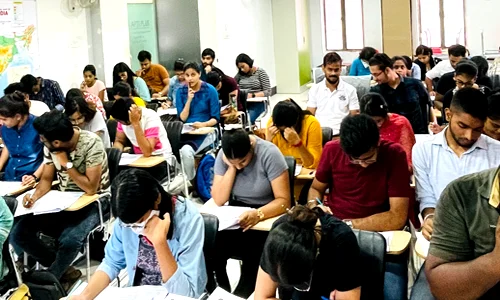



World Soil Day, observed on 5 December, highlights soil’s vital role in sustaining food systems, climate stability, water regulation and biodiversity. With nearly one-third of global soils degraded and India facing significant land decline, the day underscores the need for scientific soil management, grassland restoration, and farmer-led stewardship. It serves as a reminder that soil is a living resource requiring urgent protection to secure livelihoods, ecological health and long-term sustainability.
Click to View MoreThe Durand Line, drawn in 1893 between British India and Afghanistan, remains a deeply contested boundary due to questions of legitimacy, ethnic divisions and competing territorial claims. Pakistan treats it as its formal international border, while Afghanistan—under successive regimes—refuses to recognise it. This unresolved dispute fuels cross-border militancy, strains Af-Pak relations, and contributes to wider regional instability, with implications for India’s security and strategic engagement in Afghanistan and Central Asia.
Click to View MoreCyclone Senyar, the first November cyclone to hit Indonesia, made landfall on Sumatra on November 26, 2025. Formed unusually in the Malacca Strait, it rapidly intensified to 70–90 km/h, highlighting the growing impact of climate change and warming seas on rare regional cyclogenesis.
Click to View MoreIndia’s dairy sector, anchored by initiatives like Operation Flood, Rashtriya Gokul Mission, NAIP, and White Revolution 2.0, has transformed the country into the world’s largest milk producer. It supports over 80 million farmers, empowers women through cooperatives, ensures nutritional security, and drives rural livelihoods. Ongoing reforms in infrastructure, breeding, sustainability, and GST rationalization aim to enhance productivity, promote inclusive growth, and strengthen India’s global competitiveness in dairy.
Click to View MoreThe sub-plinian eruption of Ethiopia’s Hayli Gubbi volcano sent a stratospheric ash plume toward India via subtropical jets, threatening aviation and engines. Its sulphur dioxide release may cause brief global cooling. The event highlights the need for stronger international monitoring and exposes aviation and ecosystem vulnerabilities.
Click to View MoreTyphoon Kalmaegi, a Category 3 storm, caused widespread floods and landslides in Cebu, Philippines. This disaster, following recent earthquakes, prompted a national state of calamity, highlighting the Philippines' growing vulnerability to climate-related events.
Click to View MoreClimate change is increasing avalanche risks in the Himalayas. Rising temperatures and erratic weather destabilize snow and thaw permafrost, causing frequent avalanches. India must strengthen forecasting, disaster response, structural safeguards, and community preparedness to build resilience against this escalating climate threat.
Click to View MoreBuilding climate-resilient agriculture secures food supply and supports farmers. India must shift from input-heavy farming to sustainable methods like crop diversification, agroecology, and smart water use. Strengthening soil health, using technology, and valuing traditional knowledge will ensure lasting environmental and economic stability.
Click to View MoreClimate models are computer-based tools that simulate Earth’s climate systems to study past, present, and future climate patterns. Over time, they have evolved from simple energy balance models to advanced global and regional models. While these models help predict trends like temperature rise and monsoon changes, they face issues such as data gaps and limited regional accuracy. The Indian government is improving model precision through projects like the National Monsoon Mission and supercomputers such as Pratyush and Mihir.
Click to View MoreUNESCO added Himachal Pradesh’s Cold Desert Biosphere Reserve to the World Network of Biosphere Reserves, raising India’s tally to 13. Protecting snow leopards and supporting pastoralists, it exemplifies sustainable, community-led development in a fragile trans-Himalayan ecosystem.
Click to View MoreCyclone ‘Shakhti’ highlights the rising frequency of Arabian Sea storms, emphasizing the need for accurate IMD forecasting, resilient infrastructure, community participation, and comprehensive disaster preparedness to mitigate climate change–driven impacts on vulnerable coastal regions.
Click to View More
© 2025 iasgyan. All right reserved